Features
Jaron Rykiss’s half-year spent on exciting “Kivunim” program in Israel cut short by COVID
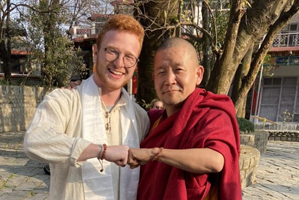
By BERNIE BELLAN
In 2019 Winnipegger Jaron Rykiss embarked on what, for almost any recent high school graduate, would probably be considered the adventure of a lifetime.
Jaron, who had just graduated from Gray Academy in the spring of last year (and doesn’t that seem like an eternity ago, even though it’s really only a little more than a year and a half ago?), had decided to enroll in a program that is probably not all that familiar to many Winnipeggers, known as “Kivunim”.
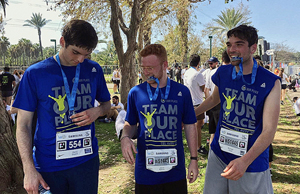
Kivunim, which means “directions” in English, is a program begun in 2006. Here is how the Kivunim website explains what it’s all about:
“KIVUNIM succeeds in delivering an immersive and transformative gap year experience of serious academic study, focused international travel and cross-cultural dialogue. These take place within the context of impressive intellectual and aesthetic exploration and growth that develops and deepens our students’ Jewish identity as engaged global citizens.
“KIVUNIM students forge a lifelong connection with Israel and the Jewish people through thoughtfully and intentionally-designed travel experiences that impart what other Jewish education programs can only envy: a nuanced and integrated understanding of Jewish civilization through sophisticated contact with the remarkable spectrum of religious traditions, cultures and world views among which the Jewish people grew throughout our 2,000-year Diaspora. Israel, our gap-year program home for the academic year, provides a challenging and surprisingly inspirational setting for appreciating the possibilities of Muslim-Jewish and Christian-Jewish co-existence and informs our broader international encounter with ‘the other’.”
Sounds pretty fantastic – right? And for any graduating high school student with the resources to participate in a program like this, it has to be considered a dream come true.
I spoke with Jaron Rykiss about his experience in Kivunim, which sadly for him and everyone else in the 2019-20 program, was cut short by COVID.
I began by asking Jaron how he heard about Kivunim in the first place?
Jaron explained that back in high school he was very involved with BBYO. Through BBYO he was exposed to a certain amount of international contact and realized “that there’s more to life than just Winnipeg”.
As graduation from Gray Academy was approaching Jaron “sat down with Avi Posen” (who was still in Winnipeg at that point, although in the fall of 2019 Avi himself made aliyah to Israel with his wife, Illana Minuk), and “we began talking about the possibility of a gap year” (the year between graduating from high school and entering a post-secondary institution).
After spending considerable time researching various programs Jaron came upon Kivunim which, he says, was perfect for someone like him – someone who didn’t have much experience outside of Winnipeg.
I asked Jaron whether he had ever been to Israel before?
He answered that he had – “twice” – once when he was nine, for a family occasion, and then again in 2017 when he was one of the students participating in the P2G (partnership together) program that Gray Academy has with Dancinger High School in Kiryat Shemonah, Israel. “That was really when I fell in love with the country,” he noted.
Fast forward to September 2019 and Jaron is in Jerusalem – “which is now my favourite city on the planet,” he said. There were 54 students in the program with Jaron – mostly from the U.S., but one other Canadian from Toronto as well.
“We all lived in a dormitory together – in the Mamillah area,” Jaron explained.
Under the original plan, Jaron said, he would have been in the program for eight and a half months, which would have taken him to the end of May.
As it was, he came back in March of this year – “exactly five months after I left”.
I asked Jaron at that point to describe what exactly he was studying during the program?
He answered: “The program goes to show you religion in other countries, so we spent the year studying Judaism, Islam…a Buddhist monk came to live with us for a couple weeks in Jerusalem and then when we got to India he showed us around.”
Which countries did Jaron actually visit as part of Kivunim? I asked.
Jaron said that the first month was spent in Jerusalem, followed by what was supposed to have been the first of several international trips.
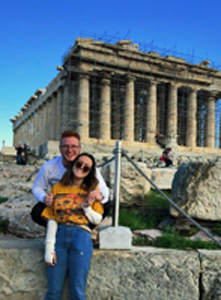
“We ended up going to Greece and Bulgaria for two weeks,” after which the group returned to Israel for a month and a half, then India, but trips to Spain, Portugal, Italy, Germany, Hungary and Morocco were all canceled due to the outbreak of COVID.
“We were supposed to end up in Morocco and meet the king there,” Jaron noted. “It’s too bad that never happened.”
(Jaron added that they were also supposed to visit Turkey at the same time as they visited Greece and Bulgaria, but that didn’t happen either. As he explained, “there were a lot of political issues” – what with the heightened civil unrest in Turkey at that time.)
What was the actual learning experience like? I wondered.
Jaron described the learning as “experiential”.
“While we were in Israel we would study the places we were going to visit,” Jaron observed, “then we would experience what we had just learned about – so it was a combination of classroom and experience.”
I was still uncertain, however, what the overall purpose of the program was – beyond exposing students to a wide variety of experiences.
According to its website, Kivunim aims to provide a “liberal arts” type of education: “The power of conceptual and intellectual integration is the ultimate (and all-to-often illusive) goal of a liberal arts education.
The website goes on to say:
“Why do we train our children in the liberal arts? It is not because these studies can grant someone virtue, but because they prepare the soul for accepting it.”
“KIVUNIM represents the beginning of a unique intellectual journey for our students and our staff and faculty. KIVUNIM succeeds in creating a thoughtful, comprehensive, and resilient intellectual foundation for our students and alumni.”
Here are the five courses taught to students in Kivunim. (There are no optional courses and all students must take the same five courses):
Civilization and Society: Homelands in Exile
Land, People, Ideas: The Challenges of Zionism
Hebrew Language and Literature
Arabic Language and Culture
Visual Learning – The Art of Seeing
A more detailed examination of each course gives a clearer understanding of just what it is that Kivunim is attempting to convey to students. Here, for instance, is an excerpt from the course outline of Land, People, Ideas: The Challenges of Zionism: “Here we seek to make the history of the Zionist movement come alive and allow KIVUNIM students to truly appreciate the capacity of the human being to become an historical actor: to make things happen. The course explores the growth of Pan-Arab nationalism and the specific development of Palestinian identity and nationalism. We encourage our students to imagine solutions while studying problems and to develop their sense of empowerment in glimpsing a future more positive than the past or today.”
If this all seems slightly airy-fairy, then I wondered how a program like this would be perceived by other institutions of higher learning – for instance, at a university here in Manitoba? After all, on its website Kivunim maintains that its courses will give students 30 academic credits, which would be equivalent to a normal year of study in an Arts program at a Manitoba university.
Jaron, who is now enrolled in an Arts program at the University of Manitoba, said that the university has not yet accepted for credit all the courses that he took in Israel.
Thus far, he has received credit for two of the courses: “Civilization and Society: Homelands in Exile”, and “Land, People, Ideas: The Challenges of Zionism”.
He noted though that he is being asked to take aptitude tests in both Hebrew and Arabic to determine whether the courses he took in those languages will be accepted for credit. As for the fifth course – “Visual Learning”, he explained that he is not expecting to obtain credit for that course, since it was more of a “photography” course than anything.
The problem, however, as Jaron noted during our conversation, is that due to COVID, so much of the university’s decision making is backed up that he doesn’t know how long it will be before he knows what the status of the two language courses that he took will be vis-à-vis receiving credit for them.
As far as his future studies go, Jaron added that he plans on majoring either in Political Studies or Philosophy, with his ultimate goal to get into law. (By the way, did I mention that Jaron’s grandfather is Jack London, about whom I have a review of his book elsewhere in this issue? As a disclaimer though, I want to explain that I contacted Jaron long before I knew that Jack had even written his memoir.)
One final aspect of the Kivunim program that hasn’t been mentioned yet in this article is the question of cost. I sent an email to the Kivunim program, asking for information as to the cost of the program. Here is the response I received:
“Our tuition is $55,000 which includes room and board, international travel, academics, a round trip from New York, etc. Tuition plus a small fee also includes 30 academic credits from Hebrew College (a full college year) accepted by most colleges in the U.S. and Canada. Every year we offer scholarships and interest free loans. We give about 40-50% of our students scholarship each year. Jaron’s year, 45% of students received a scholarship totaling approximately $375k.” (By the way, as one might expect, Kivunim is not being offered in person this year, although there is an online program.)
Features
So, what’s the deal with the honey scene in ‘Marty Supreme?’
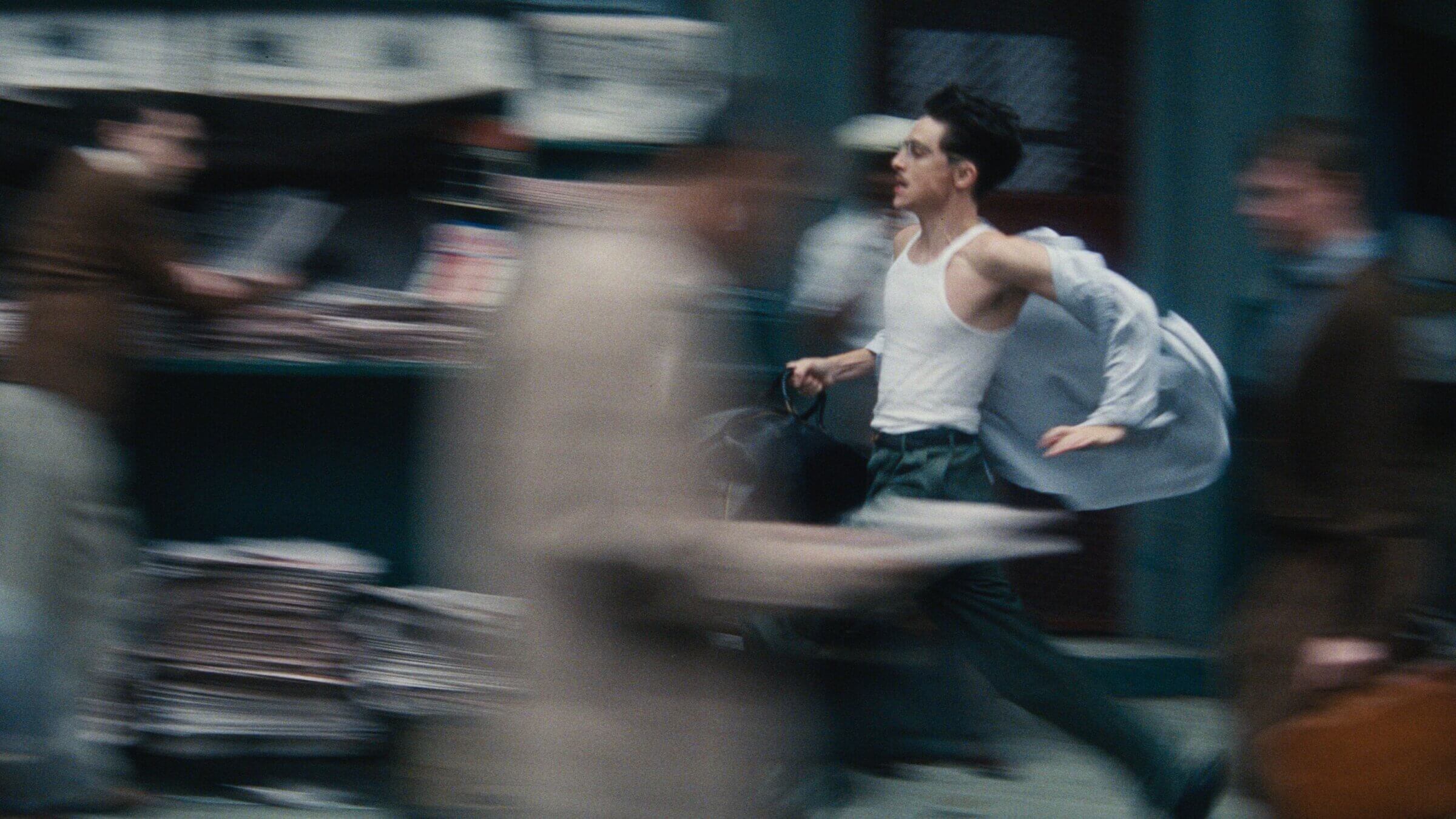
By Olivia Haynie December 29, 2025 This story was originally published in the Forward. Click here to get the Forward’s free email newsletters delivered to your inbox.
There are a lot of jarring scenes in Marty Supreme, Josh Safdie’s movie about a young Jew in the 1950s willing to do anything to secure his spot in table tennis history. There’s the one where Marty (Timothée Chalamet) gets spanked with a ping-pong paddle; there’s the one where a gas station explodes. And the one where Marty, naked in a bathtub, falls through the floor of a cheap motel. But the one that everybody online seems to be talking about is a flashback of an Auschwitz story told by Marty’s friend and fellow ping-ponger Béla Kletzki (Géza Röhrig, best known for his role as a Sonderkommando in Son of Saul).
Kletzki tells the unsympathetic ink tycoon Milton Rockwell (Kevin O’Leary) about how the Nazis, impressed by his table tennis skills, spared his life and recruited him to disarm bombs. One day, while grappling with a bomb in the woods, Kletzki stumbled across a honeycomb. He smeared the honey across his body and returned to the camp, where he let his fellow prisoners lick it off his body. The scene is a sensory nightmare, primarily shot in close-ups of wet tongues licking sticky honey off Kletzki’s hairy body. For some, it was also … funny?
Many have reported that the scene has been triggering a lot of laughter in their theaters. My audience in Wilmington, North Carolina, certainly had a good chuckle — with the exception of my mother, who instantly started sobbing. I sat in stunned silence, unsure at first what to make of the sharp turn the film had suddenly taken. One post on X that got nearly 6,000 likes admonished Safdie for his “insane Holocaust joke.” Many users replied that the scene was in no way meant to be funny, with one even calling it “the most sincere scene in the whole movie.”
For me, the scene shows the sheer desperation of those in the concentration camps, as well as the self-sacrifice that was essential to survival. And yet many have interpreted it as merely shock humor.
Laughter could be understood as an inevitable reaction to discomfort and shock at a scene that feels so out of place in what has, up to that point, been a pretty comedic film. The story is sandwiched between Marty’s humorous attempts to embarrass Rockwell and seduce his wife. Viewers may have mistaken the scene as a joke since the film’s opening credits sequence of sperm swimming through fallopian tubes gives the impression you will be watching a comedy interspersed with some tense ping-pong playing.
The reaction could also be part of what some in the movie theater industry are calling the “laugh epidemic.” In The New York Times, Marie Solis explored the inappropriate laughter in movie theaters that seems to be increasingly common. The rise of meme culture and the dissolution of clear genres (Marty Supreme could be categorized as somewhere between drama and comedy), she writes, have primed audiences to laugh at moments that may not have been meant to be funny.
The audience’s inability to process the honey scene as sincere may also be a sign of a society that has become more disconnected from the traumas of the past. It would not be the first time that people, unable to comprehend the horrors of the Holocaust, have instead derided the tales of abuse as pure fiction. But Kletzki’s story is based on the real experiences of Alojzy Ehrlich, a ping-pong player imprisoned at Auschwitz. The scene is not supposed to be humorous trauma porn — Safdie has called it a “beautiful story” about the “camaraderie” found within the camps. It also serves as an important reminder of all that Marty is fighting for.
The events of the film take place only seven years after the Holocaust, and the macabre honey imagery encapsulates the dehumanization the Jews experienced. Marty is motivated not just by a desire to prove himself as an athlete and rise above what his uncle and mother expect of him, but above what the world expects of him as a Jew. His drive to reclaim Jewish pride is further underscored when he brings back a piece of an Egyptian pyramid to his mother, telling her, “We built this.”
Without understanding this background, the honey scene will come off as out of place and ridiculous. And the lengths Marty is willing to go to to make something of himself cannot be fully appreciated. The film’s description on the review-app Letterboxd says Marty Supreme is about one man who “goes to hell and back in pursuit of greatness.” But behind Marty is the story of a whole people who have gone through hell; they too are trying to find their way back.
Olivia Haynie is an editorial fellow at the Forward.
This story was originally published on the Forward.
Features
Paghahambing ng One-on-One Matches at Multiplayer Challenges sa Pusoy in English

Ang Pusoy, na kilala din bilang Chinese Poker, ay patuloy na sumisikat sa buong mundo, kumukuha ng interes ng mga manlalaro mula sa iba’t ibang bansa. Ang mga online platforms ay nagpapadali sa pag-access nito. Ang online version nito ay lubos na nagpasigla ng interes sa mga baguhan at casual players, na nagdulot ng diskusyon kung alin ang mas madali: ang paglalaro ng Pusoy one-on-one o sa multiplayer settings.
Habang nailipat sa digital platforms ang Pusoy, napakahalaga na maunawaan ang mga format nito upang mapahusay ang karanasan sa laro. Malaking epekto ang bilang ng mga kalaban pagdating sa istilo ng laro, antas ng kahirapan, at ang ganap na gameplay dynamics. Ang mga platforms tulad ng GameZone ay nagbibigay ng angkop na espasyo para sa mga manlalaro na masubukan ang parehong one-on-one at multiplayer Pusoy, na akma para sa iba’t ibang klase ng players depende sa kanilang kasanayan at kagustuhan.
Mga Bentahe ng One-on-One Pusoy
Simpleng Gameplay
Sa one-on-one Pusoy in English, dalawa lang ang naglalaban—isang manlalaro at isang kalaban. Dahil dito, mas madali ang bawat laban. Ang pokus ng mga manlalaro ay nakatuon lamang sa kanilang sariling 13 cards at sa mga galaw ng kalaban, kaya’t nababawasan ang pagiging komplikado.
Para sa mga baguhan, ideal ang one-on-one matches upang:
- Sanayin ang tamang pagsasaayos ng cards.
- Matutunan ang tamang ranggo ng bawat kamay.
- Magsanay na maiwasan ang mag-foul sa laro.
Ang simpleng gameplay ay nagbibigay ng matibay na pundasyon para sa mas kumplikadong karanasan sa multiplayer matches.
Mga Estratehiya mula sa Pagmamasid
Sa one-on-one matches, mas madaling maunawaan ang istilo ng kalaban dahil limitado lamang ang galaw na kailangan sundan. Maaari mong obserbahan ang mga sumusunod na patterns:
- Konserbatibong pagkakaayos o agresibong strategy.
- Madalas na pagkakamali o overconfidence.
- Labis na pagtuon sa isang grupo ng cards.
Dahil dito, nagkakaroon ng pagkakataon ang mga manlalaro na isaayos ang kanilang estratehiya upang mas epektibong maka-responde sa galaw ng kalaban, partikular kung maglalaro sa competitive platforms tulad ng GameZone.
Mas Mababang Pressure
Dahil one-on-one lamang ang laban, mababawasan ang mental at emotional stress. Walang ibang kalaban na makaka-distract, na nagbibigay ng pagkakataon para sa mga baguhan na matuto nang walang matinding parusa sa kanilang mga pagkakamali. Nagiging stepping stone ito patungo sa mas dynamic na multiplayer matches.
Ang Hamon ng Multiplayer Pusoy
Mas Komplikado at Mas Malalim na Gameplay
Sa Multiplayer Pusoy, madaragdagan ang bilang ng kalaban, kaya mas nagiging komplikado ang laro. Kailangan kalkulahin ng bawat manlalaro ang galaw ng maraming tao at ang pagkakaayos nila ng cards.
Ang ilang hamon ng multiplayer ay:
- Pagbabalanse ng lakas ng cards sa tatlong grupo.
- Pag-iwas sa labis na peligro habang nagiging kompetitibo.
- Pagtatagumpayan ang lahat ng kalaban nang sabay-sabay.
Ang ganitong klase ng gameplay ay nangangailangan ng maingat na pagpaplano, prediksyon, at strategic na pasensiya.
Mas Malakas na Mental Pressure
Mas mataas ang psychological demand sa multiplayer, dahil mabilis ang galawan at mas mahirap manatiling kalmado sa gitna ng mas maraming kalaban. Kabilang dito ang:
- Bilisan ang pagdedesisyon kahit under pressure.
- Paano mananatiling focused sa gitna ng mga distractions.
- Pagkakaroon ng emosyonal na kontrol matapos ang sunod-sunod na talo.
Mas exciting ito para sa mga manlalarong gusto ng matinding hamon at pagmamalasakit sa estratehiya.
GameZone: Ang Bagong Tahanan ng Modern Pusoy
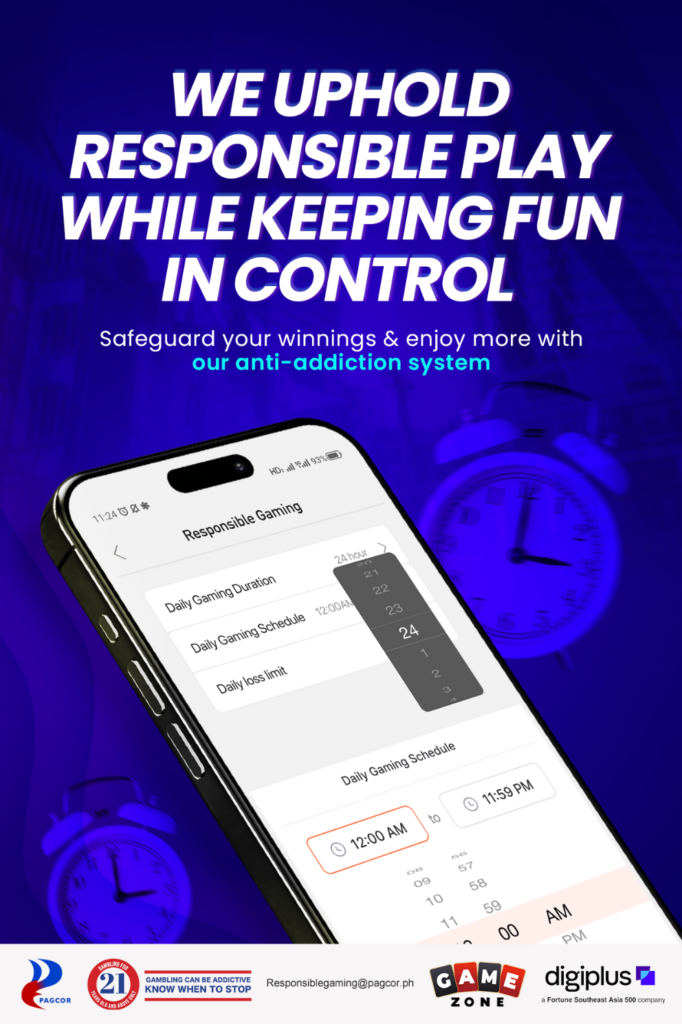
Ang GameZone online ay isang kahanga-hangang platform para sa mga naglalaro ng Pusoy in English. Nagbibigay ito ng opsyon para sa parehong one-on-one at multiplayer matches, akma para sa kahit anong antas ng kasanayan.
Mga feature ng GameZone:
- Madaling English interface para sa user-friendly na gameplay.
- Real-player matches imbes na kalaban ay bots.
- Mga tool para sa responsible play, tulad ng time reminder at spending limits.
Pagtatagal ng Pamanang Pusoy
Ang Pusoy card game in English ay nagpalawak ng abot nito sa mas maraming players mula sa iba’t ibang bahagi ng mundo habang pinapanatili ang tradisyunal nitong charm. Sa pamamagitan ng mga modernong platform tulad ng GameZone, mananatiling buhay at progresibo ang Pusoy, nakakabighani pa rin sa lahat ng antas ng manlalaro—mula sa casual enjoyment hanggang sa competitive challenges.
Mula sa maingat na pag-aayos ng mga cards hanggang sa pag-master ng estratehiya, ang Pusoy ay isang laro na nananatiling relevant habang ipinapakita ang masalimuot nitong gameplay dynamics na puno ng kultura at inobasyon.
Features
Rob Reiner asked the big questions. His death leaves us searching for answers.
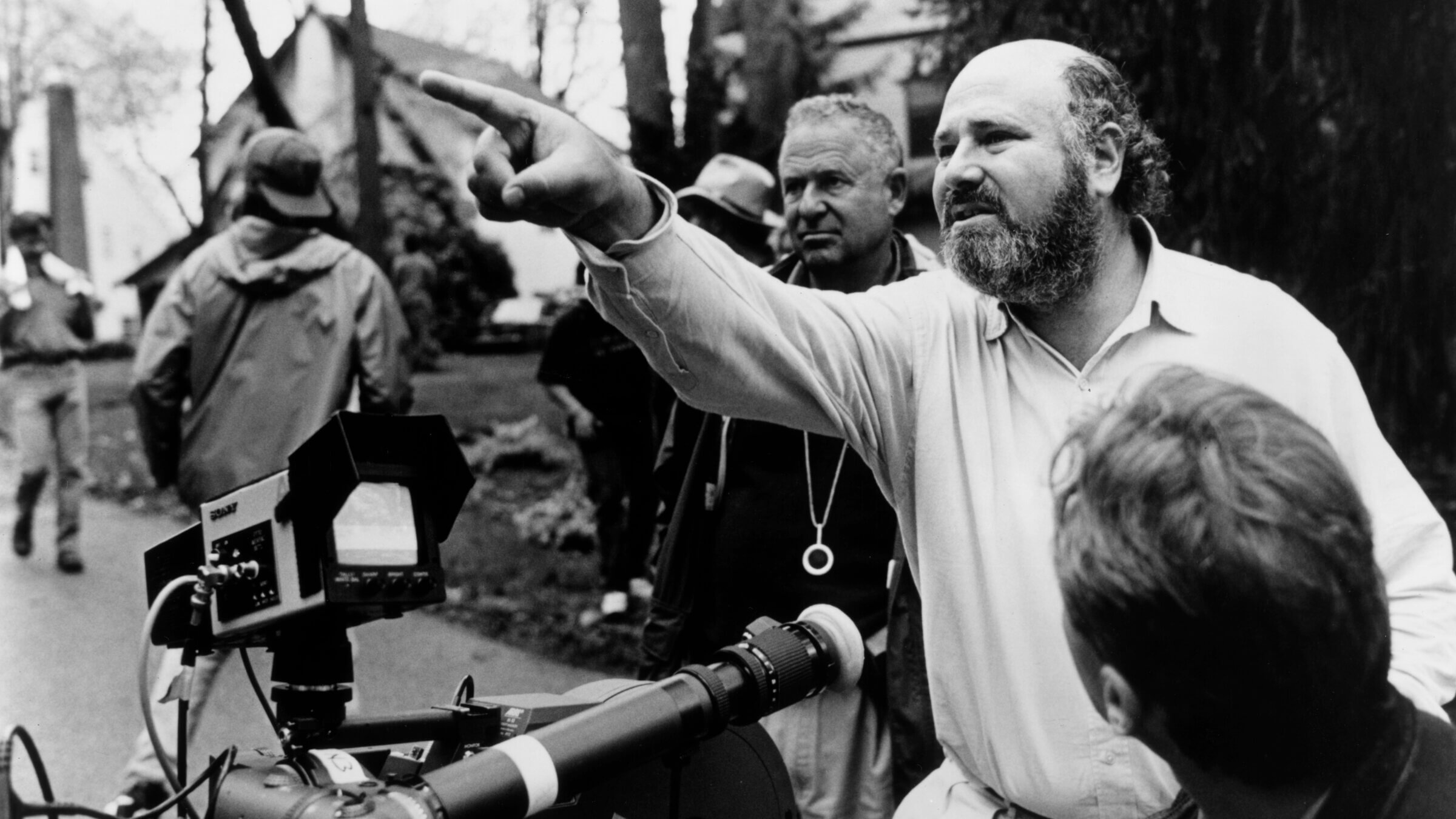
Can men and women just be friends? Can you be in the revenge business too long? Why don’t you just make 10 louder and have that be the top number on your amp?
All are questions Rob Reiner sought to answer. In the wake of his and his wife’s unexpected deaths, which are being investigated as homicides, it’s hard not to reel with questions of our own: How could someone so beloved come to such a senseless end? How can we account for such a staggering loss to the culture when it came so prematurely? How can we juggle that grief and our horror over the violent murder of Jews at an Australian beach, gathered to celebrate the first night of Hanukkah, and still light candles of our own?
The act of asking may be a way forward, just as Rob Reiner first emerged from sitcom stardom by making inquiries.
In This is Spinal Tap, his first feature, he played the role of Marty DiBergi, the in-universe director of the documentary about the misbegotten 1982 U.S. concert tour of the eponymous metal band. He was, in a sense, culminating the work of his father, Carl Reiner, who launched a classic comedy record as the interviewer of Mel Brooks’ 2,000 Year Old Man. DiBergi as played by Reiner was a reverential interlocutor — one might say a fanboy — but he did take time to query Nigel Tufnell as to why his amp went to 11. And, quoting a bad review, he asked “What day did the Lord create Spinal Tap, and couldn’t he have rested on that day too?”
But Reiner had larger questions to mull over. And in this capacity — not just his iconic scene at Katz’s Deli in When Harry Met Sally or the goblin Yiddishkeit of Miracle Max in The Princess Bride — he was a fundamentally Jewish director.
Stand By Me is a poignant meditation on death through the eyes of childhood — it asks what we remember and how those early experiences shape us. The Princess Bride is a storybook consideration of love — it wonders at the price of seeking or avenging it at all costs. A Few Good Men is a trenchant, cynical-for-Aaron Sorkin, inquest of abuse in the military — how can it happen in an atmosphere of discipline.
In his public life, Reiner was an activist. He asked how he could end cigarette smoking. He asked why gay couples couldn’t marry like straight ones. He asked what Russia may have had on President Trump. This fall, with the FCC’s crackdown on Jimmy Kimmel, he asked if he would soon be censored. He led with the Jewish question of how the world might be repaired.
Guttingly, in perhaps his most personal project, 2015’s Being Charlie, co-written by his son Nick he wondered how a parent can help a child struggling with addiction. (Nick was questioned by the LAPD concerning his parents’ deaths and was placed under arrest.)
Related
None of the questions had pat answers. Taken together, there’s scarcely a part of life that Reiner’s filmography overlooked, including the best way to end it, in 2007’s The Bucket List.
Judging by the longevity of his parents, both of whom lived into their 90s, it’s entirely possible Reiner had much more to ask of the world. That we won’t get to see another film by him, or spot him on the news weighing in on the latest democratic aberration, is hard to swallow.
Yet there is some small comfort in the note Reiner went out on. In October, he unveiled Spinal Tap II: The Beginning of the End, a valedictory moment in a long and celebrated career.
Reiner once again returned to the role of DiBergi. I saw a special prescreening with a live Q&A after the film. It was the day Charlie Kirk was assassinated. I half-expected Reiner to break character and address political violence — his previous film, God & Country, was a documentary on Christian Nationalism.
But Reiner never showed up — only Marty DiBergi, sitting with Nigel Tuffnell (Christopher Guest), David St. Hubbins (Michael McKean) and Derek Smalls (Harry Shearer) at Grauman’s Chinese Theater in Los Angeles. The interview was broadcast to theaters across the country, with viewer-submitted questions like “What, in fact, did the glove from Smell the Glove smell like?” (Minty.) And “Who was the inspiration for ‘Big Bottom?’” (Della Reese.)
Related
- Actor-Director Rob Reiner dies at 78
- Carl Reiner On Judaism, Atheism And The ‘Monster’ In The White House
- Mandy Patinkin On His Favorite ‘Princess Bride’ Quote
DiBergi had one question for the audience: “How did you feel about the film?”
The applause was rapturous, but DiBergi still couldn’t get over Nigel Tuffnell’s Marshall amp, which now stretched beyond 11 and into infinity.
“How can that be?” he asked. “How can you go to infinity? How loud is that?”
There’s no limit, Tuffnell assured him. “Why should there be a limit?”
Reiner, an artist of boundless curiosity and humanity, was limitless. His remit was to reason why. He’ll be impossible to replace, but in asking difficult questions, we can honor him.
The post Rob Reiner asked the big questions. His death leaves us searching for answers. appeared first on The Forward.

